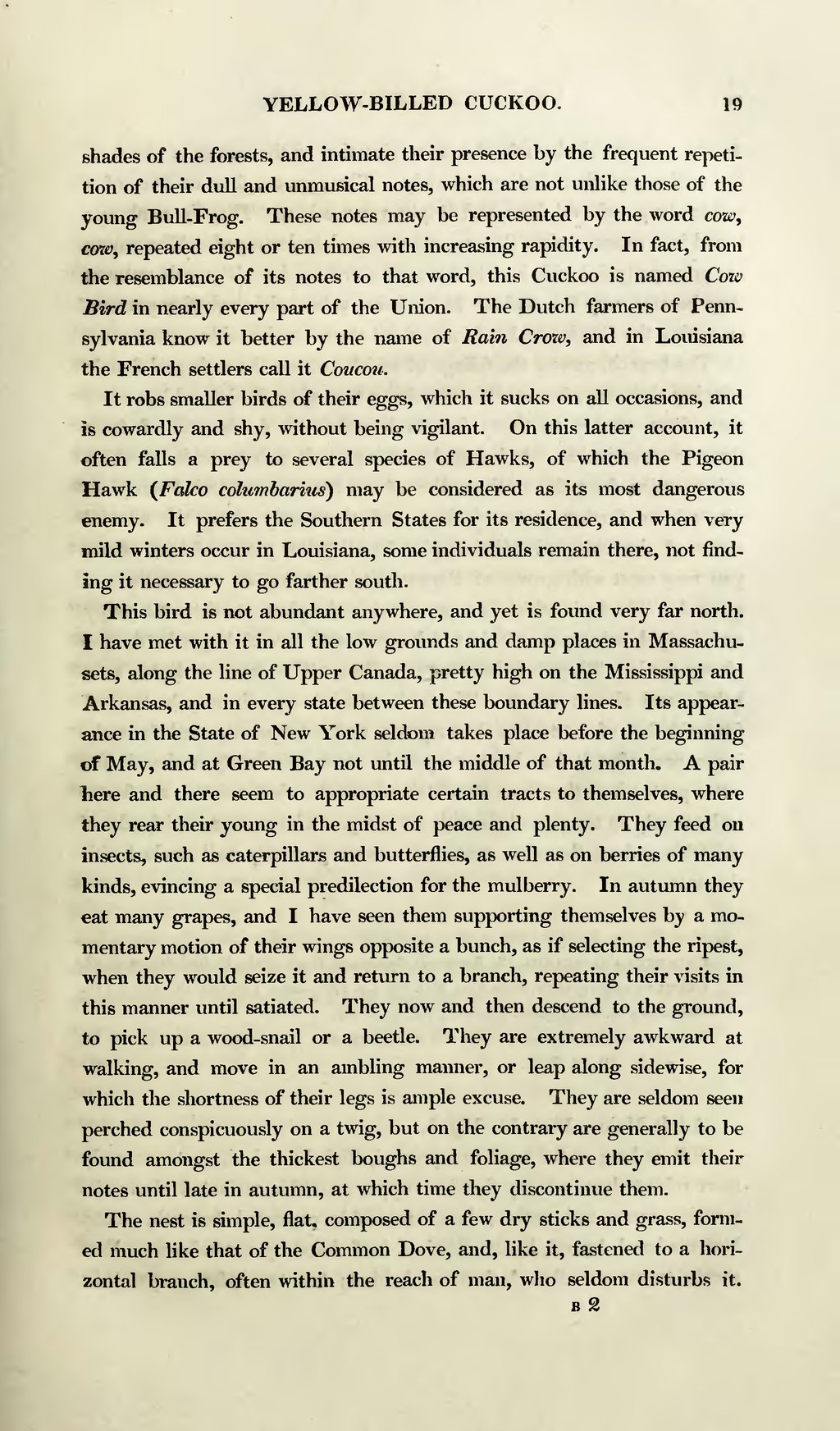shades of the forests, and intimate their presence by the frequent repetition of their dull and unmusical notes, which are not unlike those of the young Bull-Frog. These notes may be represented by the word cow, cow, repeated eight or ten times with increasing rapidity. In fact, from the resemblance of its notes to that word, this Cuckoo is named Cow Bird in nearly every part of the Union. The Dutch farmers of Pennsylvania know it better by the name of Rain Crow, and in Louisiana the French settlers call it Coucou.
It robs smaller birds of their eggs, which it sucks on all occasions, and is cowardly and shy, without being vigilant. On this latter account, it often falls a prey to several species of Hawks, of which the Pigeon Hawk (Falco columbarius) may be considered as its most dangerous enemy. It prefers the Southern States for its residence, and when very mild winters occur in Louisiana, some individuals remain there, not finding it necessary to go farther south.
This bird is not abundant anywhere, and yet is found very far north. I have met with it in all the low grounds and damp places in Massachusets, along the line of Upper Canada, pretty high on the Mississippi and Arkansas, and in every state between these boundary lines. Its appearance in the State of New York seldom takes place before the beginning of May, and at Green Bay not until the middle of that month. A pair here and there seem to appropriate certain tracts to themselves, where they rear their young in the midst of peace and plenty. They feed on insects, such as caterpillars and butterflies, as well as on berries of many kinds, evincing a special predilection for the mulberry. In autumn they eat many grapes, and I have seen them supporting themselves by a momentary motion of their wings opposite a bunch, as if selecting the ripest, when they would seize it and return to a branch, repeating their visits in this manner until satiated. They now and then descend to the ground, to pick up a wood-snail or a beetle. They are extremely awkward at walking, and move in an ambling manner, or leap along sidewise, for which the shortness of their legs is ample excuse. They are seldom seen perched conspicuously on a twig, but on the contrary are generally to be found amongst the thickest boughs and foliage, where they emit their notes until late in autumn, at which time they discontinue them.
The nest is simple, flat, composed of a few dry sticks and grass, formed much like that of the Common Dove, and, like it, fastened to a horizontal branch, often within the reach of man, who seldom disturbs it.
